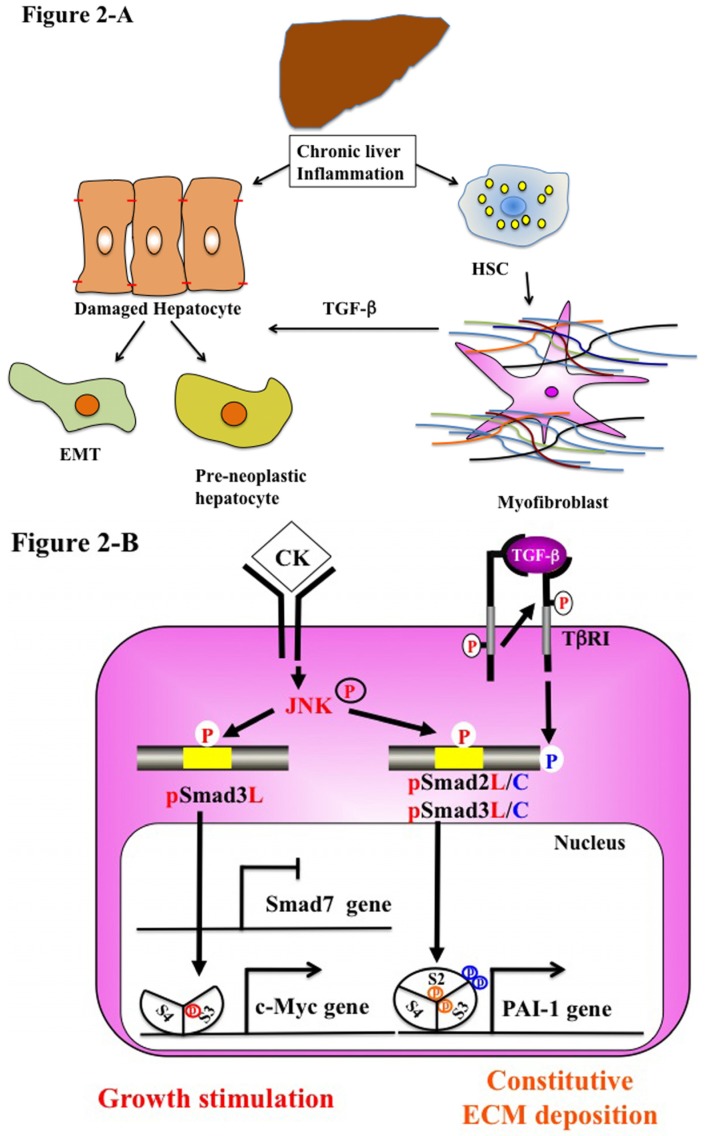Figure 2.
Liver fibro-carcinogenesis-related EMT and phospho-Smad signaling during chronic liver disease. (A) Prolonged exposure to chronic injury; HSC undergo constitutive activation to become myofibroblasts (MFB)-like cells, which persistently induce deposition of ECM and liver fibrosis. Continuous insults will shift EMT-like cells to complete EMT and pre-neoplastic hepatocytes. (B) During chronic liver injury, pro-inflammatory cytokines (CK), such as TNF-α activate JNK, result in phosphorylation of both Smad2L and Smad3L, both in MFB and pre-neoplastic hepatocyte. P-Smad3L translocates with Smad4 to the nucleus and binds the PAI-1 promoter. After COOH-tail phosphorylation of cytoplasmic pSmad2L by TβRI, pSmad2L/C translocates to the nucleus. Both pSmad2L/C and pSmad3L stimulates PAI-1 transcription and ECM deposition, while they suppress the pSmad3C-mediated tumor suppressive pathway. Pre-neoplastic hepatocytes exhibit the same oncogenic (mitogenic) pSmad3L and fibrogenic pSmad2L signaling as MFB, thereby accelerating liver fibrosis and increasing the risk of HCC. In contrast to Smad7 induction in HSC via the pSmad3C pathway, pSmad3L cannot induce Smad7 in MFB and pre-neoplastic hepatocytes (left). Under a low level of Smad7, the fibrogenic phospho-Smad signaling can constitutively promote ECM deposition by MFB, which may eventually develop into accelerated liver fibro-carcinogenesis.

